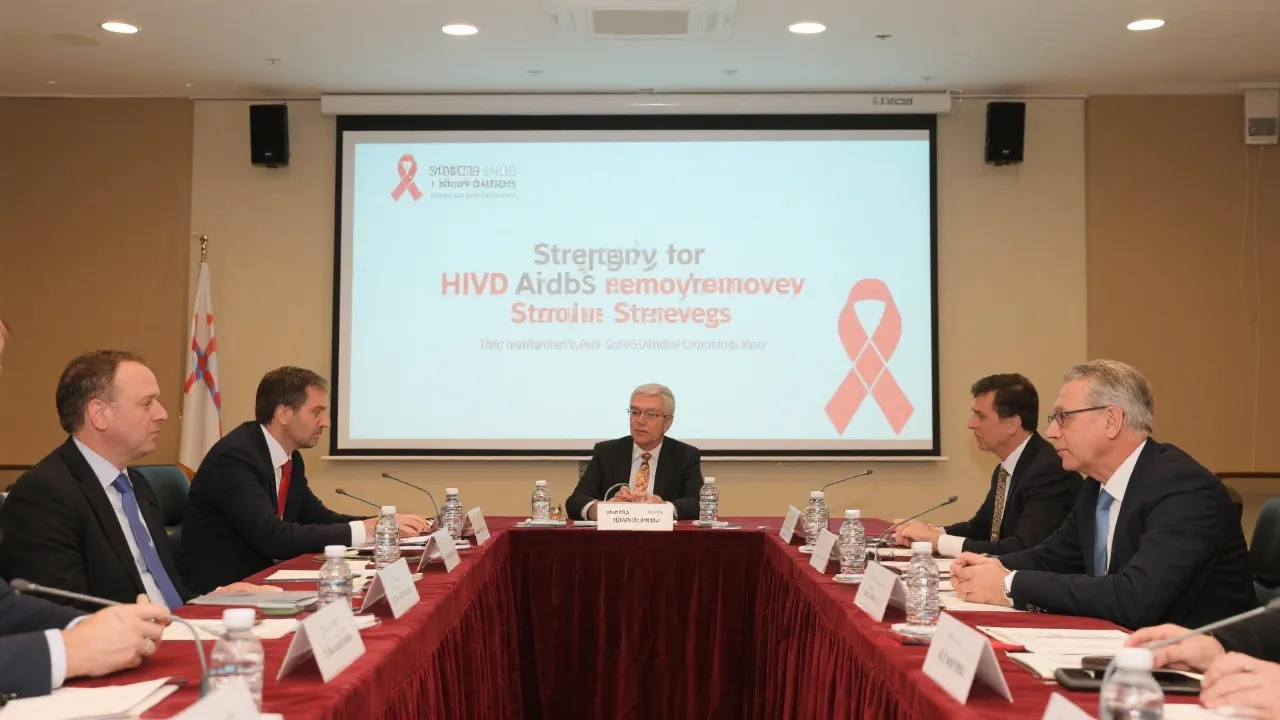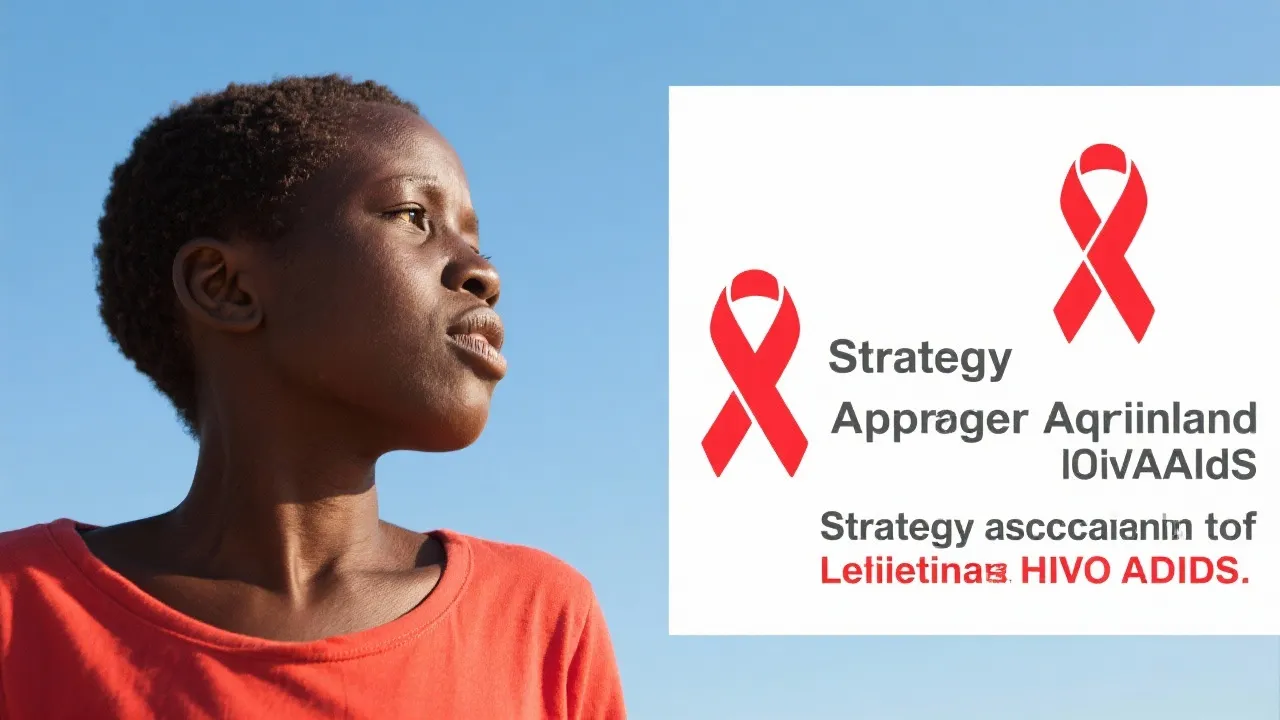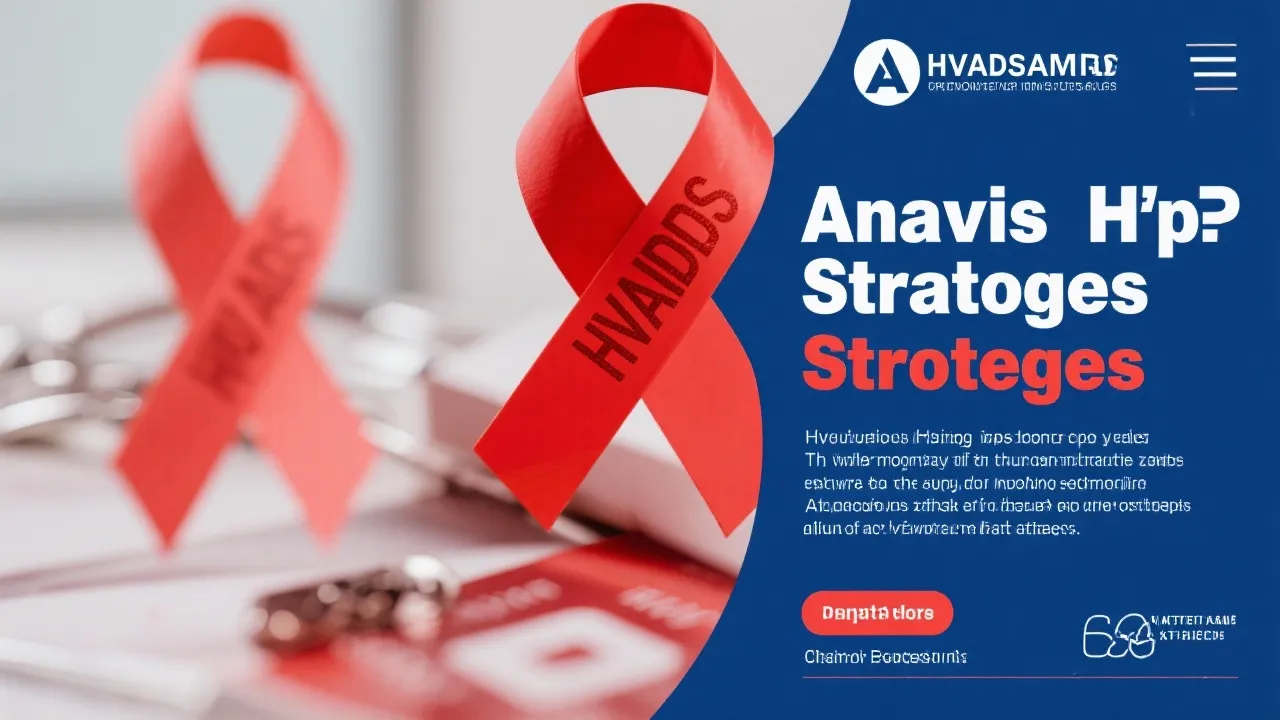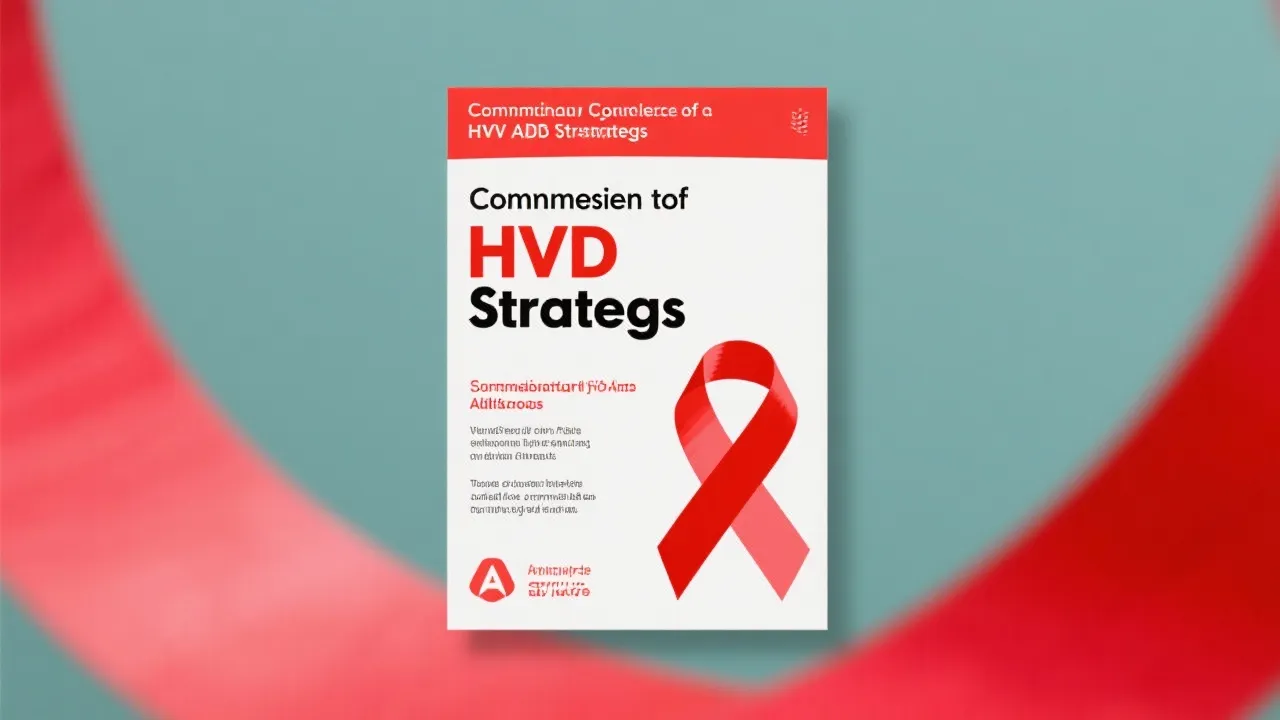Strategies to Alleviate HIV/AIDS
This guide explores strategies developed to alleviate HIV/AIDS, highlighting the concerted efforts of global health agencies, local communities, and research institutions. Understanding the multifaceted approaches to combating HIV/AIDS is crucial as it remains a significant challenge worldwide, affecting millions and demanding comprehensive strategies to curb its spread and impact.
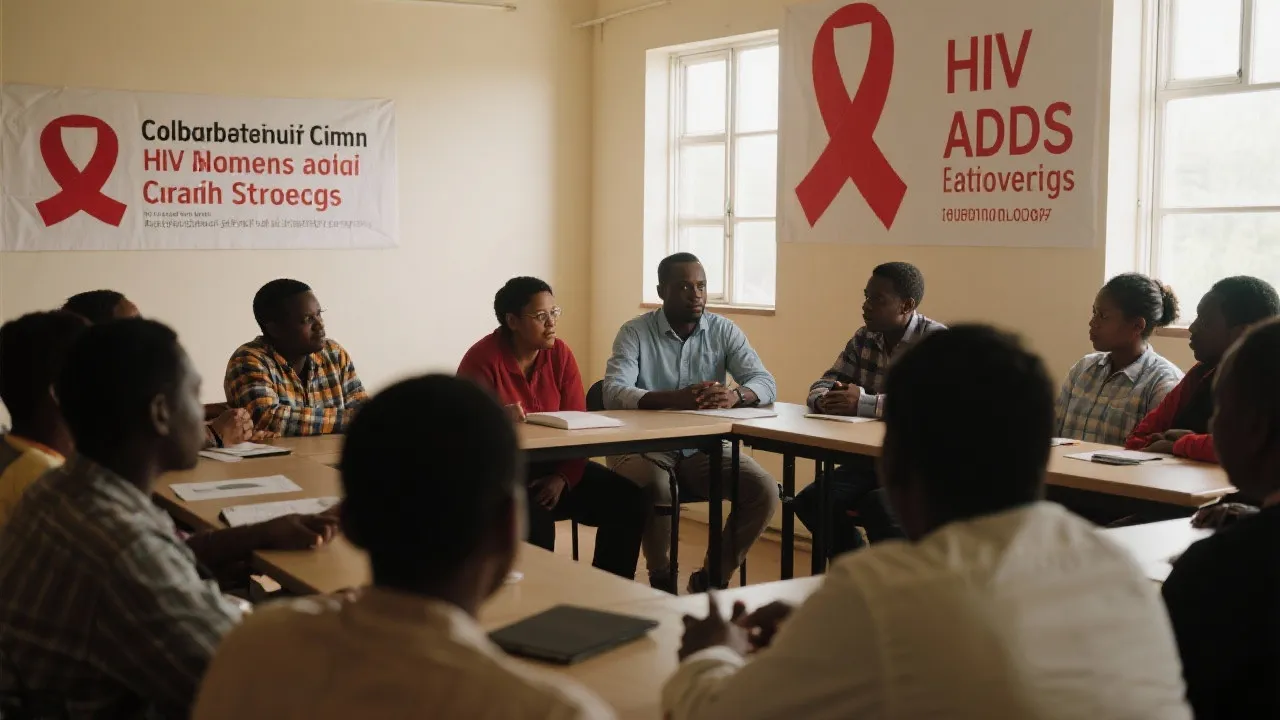
Introduction to the Global HIV/AIDS Challenge
The battle against HIV/AIDS has been a predominant health challenge on a global scale, engaging numerous healthcare providers, policy-makers, and communities in seeking effective solutions. Addressing this epidemic requires understanding the intricate network of prevention, treatment, and education strategies designed to diminish its prevalence and impact. Over the decades, HIV/AIDS has not only affected individuals but has posed significant implications for global health systems, economies, and societal structures, driving the need for coordinated efforts across borders.
Global Strategies for HIV/AIDS Prevention
The cornerstone of alleviating HIV/AIDS is prevention. This encompasses various approaches, including educational programs that foster awareness about safe practices and the importance of regular testing. Vaccination research, while not yielding a successful remedy yet, continues to advance, promising future protective measures. In addition to educational efforts, community outreach plays a crucial role in disseminating information related to HIV transmission and prevention strategies. This includes targeted campaigns that address diverse populations, such as adolescents, men who have sex with men (MSM), and intravenous drug users, allowing for tailored messaging that resonates with different segments of the population.
Furthermore, one of the promising preventive measures is the use of Pre-Exposure Prophylaxis (PrEP), a medication prescribed to individuals at high risk of HIV, proving to be highly effective in reducing transmission. PrEP has shown efficacy in clinical studies, with results indicating a reduction in the risk of acquiring HIV by up to 99% when taken consistently. The growing availability of PrEP is enhancing preventive strategies, yet comprehensive awareness and access remain challenges, particularly in low-resource settings. To overcome these barriers, public health campaigns are increasingly using innovative approaches, such as social media and mobile apps, to reach potential users and provide information on where to obtain PrEP.
Moreover, testing strategies have evolved, with rapid and self-testing options becoming more widespread. This shift allows individuals to seek testing in confidential environments, reducing the stigma associated with traditional health care settings. Increased access to testing, paired with effective linkage to care, is essential in identifying individuals who are HIV positive and facilitating their entry into treatment, thus breaking the chain of transmission.
Treatment and Management of HIV/AIDS
Antiretroviral therapy (ART) has transformed HIV/AIDS from a fatal diagnosis to a manageable chronic condition. These medications, when administered appropriately, can suppress the virus to undetectable levels, greatly improving life expectancy and quality of life for those infected. ART operates on the principle of maintaining viral load at an undetectable level, thereby preventing the progression to AIDS and dramatically reducing the likelihood of transmission to sexual partners. The accessibility of ART in various regions plays a crucial role in the successful management of the disease. However, challenges remain in ensuring these therapies reach all who need them, especially in underdeveloped areas. Factors such as economic constraints, infrastructural inadequacies, and social stigma act as significant barriers to treatment uptake.
In addition to traditional ART, researchers are exploring long-acting formulations and new drug classes that may provide easier adherence options. Aimed at decreasing pill burden, these innovations include injectables and implants, which could ensure sustained drug release and maintain therapeutic levels over extended periods. Incorporating these new treatments into healthcare and community settings may further improve retention in care and overall outcomes for those living with HIV/AIDS.
Furthermore, the role of mental health in the management of HIV/AIDS cannot be overstated. Living with a chronic illness like HIV necessitates robust mental health support systems that are integrated into routine healthcare. Addressing the psychological impacts of living with HIV aids in medication adherence and improves quality of life. Community support groups and counseling services tailored for individuals living with HIV are vital in fostering resilience and reducing feelings of isolation.
Community Engagement and Local Solutions
Local communities are at the heart of sustainable solutions to HIV/AIDS. By promoting community-led initiatives, such as peer-led support groups and localized education campaigns, regions can tailor strategies to their specific cultural and socio-economic contexts. This localized approach not only enhances the effectiveness of prevention and treatment programs but also empowers communities to take charge of their health outcomes. For instance, involving local leaders and influencers can increase trust and engage populations that might otherwise be reticent to seek services or participate in educational programs.
Community-based organizations (CBOs) play an essential role in implementing these initiatives, often serving as a bridge between healthcare providers and the populations they serve. CBOs can provide culturally competent resources, establish testing and treatment centers, and facilitate workshops that promote dialogue around sexual health. By utilizing existing community strengths and networks, interventions can be more efficiently designed and implemented to meet the unique needs of different demographics.
The integration of traditional health beliefs and practices alongside evidence-based medical approaches can further enhance community ownership of strategies against HIV/AIDS. In many places, the understanding of health reflects cultural beliefs that may conflict with Western medical systems. By respecting and incorporating these beliefs into health education and treatment adherence programs, healthcare workers can foster a more receptive environment conducive to behavioral change.
Research and Innovation: The Future of HIV/AIDS Alleviation
Ongoing research and innovation continue to shape the landscape of HIV/AIDS treatment and prevention. Genetic studies are unraveling new pathways for potential treatments, while technological advancements in diagnostics are enabling earlier detection of the virus. Moreover, global collaborations in research are driving forward the potential development of a functional cure or vaccine. Current research focuses on gene-editing techniques, such as CRISPR, which aim to excise the proviral DNA from host cells, offering hope for long-term remission.
Additionally, the implementation of artificial intelligence (AI) in public health research has shown promise in predicting outbreak trends and identifying high-risk populations that can benefit from targeted interventions. AI models analyze vast sets of data, including social, economic, and healthcare variables, providing actionable insights that can guide the strategic allocation of resources and tailoring of health campaigns.
The landscape of HIV/AIDS is also witnessing the integration of mobile health (mHealth) technologies, which enhance patient engagement and adherence to treatment. Apps and SMS reminders for medication schedules and doctor’s appointments keep patients connected to their care even in challenging circumstances, thus mitigating some barriers to consistent treatment.
Comparative Analysis: Strategies
| Strategy | Impact |
|---|---|
| Pre-Exposure Prophylaxis (PrEP) | Significantly reduces transmission rates in high-risk populations. |
| Antiretroviral Therapy (ART) | Transforms HIV/AIDS into a manageable chronic illness with prolonged lifespan. |
| Community Initiatives | Empowers local solutions, tailored to cultural contexts for effective intervention. |
| Vaccination Research | Potential to provide immunity against HIV, reducing new infections. |
| Mobile Health Technologies | Increases patient engagement and adherence to treatment. |
FAQs
- What role does education play in HIV/AIDS prevention?
Education is critical as it raises awareness about safe practices and reduces stigma associated with the disease, thus encouraging more individuals to seek testing and preventive measures. In addition to general education, targeted programs focusing on marginalized populations are key to addressing gaps in understanding and access to information. - Can HIV/AIDS be cured?
While there is currently no cure for HIV/AIDS, ongoing research is exploring potential treatment breakthroughs. Effective management through ART can lead to a high quality of life, allowing those infected to live long, healthy lives while significantly reducing the risk of transmitting the virus to others. - How can communities support HIV/AIDS strategies?
Communities can support strategies by engaging in local education, promoting testing and treatment accessibility, and supporting peer groups that help manage emotional and mental health impacts. Additionally, community advocacy for resources and funding can significantly enhance health service delivery. - What advancements are being made towards an HIV vaccine?
Scientists are actively engaged in multiple approaches to develop an effective HIV vaccine. Current research includes the exploration of broadly neutralizing antibodies (bnAbs) and new adjuvants in vaccine candidates, aiming to stimulate a robust immune response against the virus. Clinical trials are ongoing, and every step forward brings hope for a future where HIV can be effectively prevented through vaccination. - What are the psychological effects of living with HIV/AIDS?
The psychological impacts can be profound, encompassing anxiety, depression, and isolation. These emotional disturbances can complicate adherence to treatment and overall health outcomes. Access to mental health services and community support systems are critical for addressing these challenges and promoting overall well-being.
Conclusion: A Collaborative Effort
The fight against HIV/AIDS necessitates a multifaceted approach, leveraging the strengths of global and local efforts alike. By continuing to innovate, educate, and empower communities, we move closer to a world where HIV/AIDS is no longer a threat to public health. Understanding and supporting these strategies is essential for achieving lasting progress in alleviating the epidemic. Collaboration among governments, non-governmental organizations, healthcare providers, and communities is vital in navigating the complexities of HIV/AIDS, emphasizing that every stakeholder plays a crucial role in this ongoing battle. Through collective efforts, shared knowledge, and commitment to social equity, we can create a future where HIV is merely a chapter in the history of public health—a story of human resilience and triumph over adversity.

